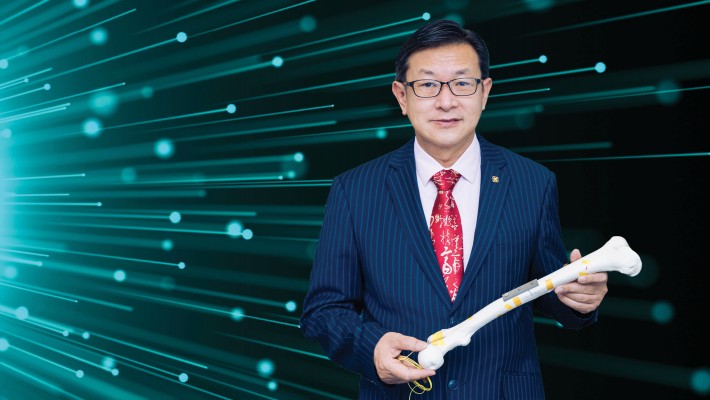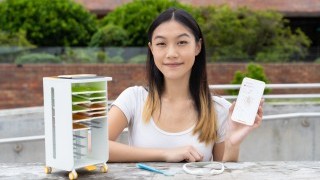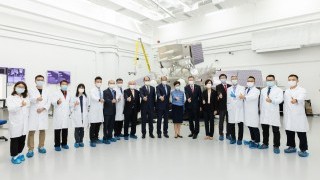Monitoring medical conditions from inside the body with optical fibre microsensors
PolyU researchers have developed groundbreaking optical fibre microsensors which can be implanted into people’s bodies for medical applications.
Once used mainly for the transmission of data, fibre optics technology is increasingly being deployed in medical applications. Professor Tam Hwa-yaw, Chair Professor of Photonics and Head of PolyU’s Department of Electrical Engineering, has led a research team to develop novel fibre optic microsensors, which can be implanted into people’s bodies to enable more accurate medical surveillance for surgery and treatment.
The research team used an advanced plastic material, ZEONEX, to develop the microsensors, while they also added a ‘side hole’ inside the optical fibres to enhance their sensitivity. Named the “Side Hole Polymer Optical Fibre Sensors”, the microsensors are biocompatible, supple and extremely sensitive to very small pressure changes inside human bodies.
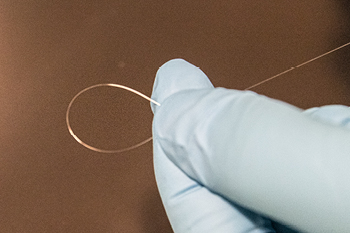
The new microsensors can be as small as a few micrometres.
“Our microsensors can detect extremely subtle changes, even a difference smaller than 1% of atmospheric pressure. They are sensitive enough to measure pressure inside the lungs while someone is breathing,” Professor Tam said. He believes the breakthrough will enable the development of a whole new range of applications for medical monitoring inside people’s bodies.
Overcoming the drawbacks of existing optical fibres
Although optical fibres are increasingly being used in medical equipment, such as sensor-based wearable medical devices and surgical instrumentation, the existing glass optical fibres and the traditional plastic optical fibres have several drawbacks. The former is too stiff and brittle, while the latter may absorb water that can affect the operation of sensors.
The PolyU-developed microsensors overcome these challenges, enabling them to be implanted inside people’s bodies. Professor Tam explained: “The plastic material ZEONEX has low moisture absorption and high precision in molding. To enhance the sensitivity of the microsensors, we have also added a side hole running parallel with the light transmission path inside the optical fibre.”
“Therefore, the microsensors can be made as small as a few micrometres and their sensitivity to pressure is 20 times that of traditional optical fibre sensors,” he added.
Creating new possibilities for medical applications
As the microsensors are humidity insensitive, shatter-resistant, chemically inert and biocompatible, they can potentially be used for a broader range of medical applications.
Cochlear implantation with higher accuracy 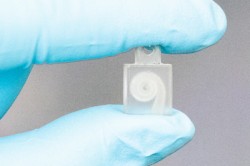 The PolyU research team, in collaboration with the University of Melbourne and Royal Victorian Eye and Ear Hospital in Australia, is incorporating tailored microsensors into cochlear implants, so that surgeons can obtain real-time information on the location and force response of the cochlear implant during surgery, thereby increasing the implant’s effectiveness. Navigation monitoring in cardiac catheterisation With high shatter resistance and biocompatibility, the new optical fibres can be used for precise navigation and shape detection for minimally invasive surgical procedures.
Bone fracture recovery monitoring 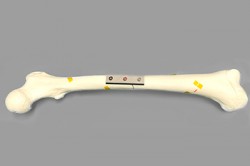 The PolyU research team is collaborating with Monash University in Australia to integrate the microsensors into orthopaedic implants for monitoring bone fracture recovery. The photo shows that the microsensors (fixed by yellow tapes) are placed near the fixed implant of the fractured area (middle) of the thigh bone. |
The future of microsensors
The “Side Hole Polymer Optical Fibre Sensors” research findings were published in 2021 in US-based The Optical Society’s Optics Letters. Some of the applications jointly developed with other universities have already been granted patents.
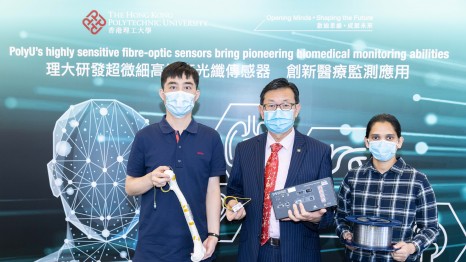
By integrating the new microsensors with wireless Internet of Things, Professor Tam (middle) and research fellows, Dr Xin Cheng (left) and Dr Dinusha Serandi Gunawardena (right), aim to develop a sensing network that can provide a comprehensive and precise picture of changes inside human bodies.
Professor Tam and his team are now working to expand the sensors’ ability to measure other physical or chemical changes in the body, such as acidity and temperature.
“We are also seeking to develop a sensing network that integrates our sensors with emerging technologies like the wireless Internet of Things. The sensing network would be able to give a comprehensive and precise picture of changes inside the human body, thus helping patients around the world through technological innovation,” he said.



